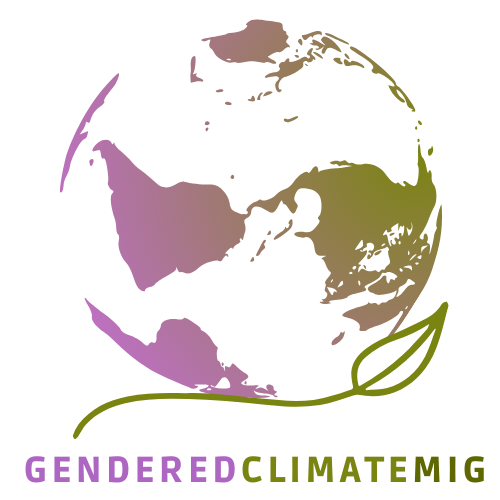Psychological Toll: Mental health impacts of climate change

Credit: Smiley N. Pool / The Dallas Morning News / AP
25 June 2024
The impacts of climate change on physical health have been well documented. For example, we know that air pollution can lead to respiratory illnesses and extreme weather can cause heat strokes. It should be no surprise, then, that extreme weather events affect mental health too. According to Elizabeth Haase, M.D., “the mental health consequences of single disasters for most people include mild stress and insomnia, high-risk coping behavior such as increased alcohol use, and mental disorders such as depression, anxiety and post-traumatic stress.” Furthermore, Dr. Haase highlights that this is also the case for people who experience repeated disasters and have long-term effects including “cumulative community stress, increases in poverty, domestic violence, and substance abuse, and forced migration.”
Yet, the evidence is robust in some areas and severely lacking in others. In a scholarly article published in the International Journal of Environmental Research and Public Health, the authors shed light on the difficulty in “defining health outcomes associated with drought, particularly in the area of mental health… There is still much to be discovered about adverse health impacts of non-acute events. Droughts pose a unique threat to mental health with their slow onset, extended exposure windows, and indirect mechanisms of effects, leaving a knowledge gap to be addressed.” With increasing likelihood of droughts and other non-acute events, the more important it will become for us to better understand the impact on mental health.
Some initial findings published in the Journal of Mental and Nervous Disease emphasize the early stages of this type of research – “climate change is increasingly recognized as having multiple adverse mental health effects, many of which are just beginning to be understood.” In that same article, authors share a worrying potential link observed in the United States between climate change and suicide rates; “the elevated rates of suicides observed in some communities affected by climate change and rising rates of suicide… as climate change intensifies have suggested the two may be associated.”
Certain populations more affected
When it comes to the impacts following an acute disaster (i.e. hurricanes, floods, tornadoes, etc.), this is more documented. A prominent example is Hurricane Katrina that devastated the New Orleans community in 2005. The hurricane caused extensive flooding and led to 1.5 million residents’ evacuation. A year later, half a million people were still displaced and living in unstable housing arrangements. Research at Columbia University’s Mailman School of Public Health found that children post-Katrina were “4.5 times more likely to have serious emotional disturbance than children not affected by the disaster.” Many of those who left New Orleans arrived in Austin, Texas lacking “basic identification, a change of clothing, or necessary prescription drugs.” Worst still, they often had separated from family members and, therefore, experienced increased emotional stress. Hurricane Katrina “brought issues of race and poverty in America to the forefront of public consciousness” because it disproportionately affected poor African Americans. Even in the reconstruction after the storm, Louisiana State University highlights how the poor African American community continued to suffer because “ an increase in home values, poverty deconcentration efforts, and the demolition of four prominent public housing projects made it difficult for many of the most affected to find housing in the city.”
Two years after Katrina, the disproportionate mental health impacts on vulnerable communities in emergency settings, including natural disasters, were recognized at a global level. The Inter Agency Standing Committee (IASC) established by the UN General Assembly in 1992 developed guidelines for humanitarian actors working in emergency response contexts to protect people’s psychological well-being and mental health during and after an emergency. Importantly, in these guidelines, there is an acknowledgement of the unequal impacts across different segments of the population – “emergencies erode normally protective supports, increase the risks of diverse problems and tend to amplify pre existing problems of social injustice and inequality. For example, natural disasters such as floods typically have a disproportionate impact on poor people.” An emerging body of research confirms that some communities are hit harder. A study on India highlights that “developing countries are more prone to disasters or hazards due to the various challenges like poverty, lack of resources, lack of educational opportunities, poor infrastructure, and lack of trained manpower, lack of awareness and knowledge of disaster mental health.”
Furthermore, according to the World Health Organization (WHO), one in five people affected by natural disasters will have post-traumatic stress disorder (PTSD), anxiety, bipolar disorder or schizophrenia and these “risks are heightened in older people and marginalized groups. Stressful events such as violence and loss, as well as poverty, discrimination, overcrowding, and food and resource insecurity, are common in emergencies and can increase the risk of developing mental health conditions.” The Royal Australian and New Zealand College of Psychiatrists confirm this finding that different groups are affected more: “there are groups in society who are more vulnerable or have special needs in post-traumatic situations including children, people from culturally and linguistically diverse communities, rural and remote communities, the elderly and people with pre-existing psychiatric disorders and medical conditions. Indigenous people with close emotional and ancestral ties to the land are also likely to be disproportionately affected by environmental change and extreme weather events. People who have pre-existing psychiatric morbidity when a disaster occurs are at greater risk and may need to be closely monitored.”
Where do we go from here?
Given the increasing frequency and severity of extreme weather and (non)acute disasters, the focus on developing holistic and comprehensive long-term programming and support services will need to be at the forefront of public policy agendas. Ideally, with an intentional focus on tailored support for more vulnerable communities. In the meantime, we can all still better prepare ourselves. There are also more and more resources being developed for dealing with impacts on mental health. For example, the American Psychiatric Association posted a video, “how to talk to your kids about climate anxiety.” This could serve as a tool to talk to the kids in our lives in an informed way.
Note: I am not a trained psychologist or psychiatrist.

 Itziri Gonzalez Barcenas
Itziri Gonzalez Barcenas
